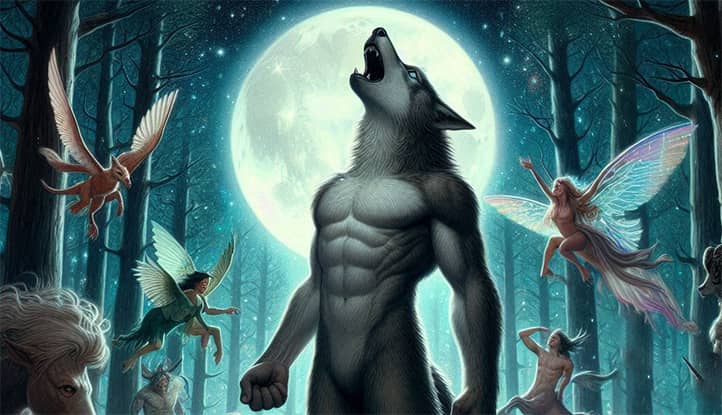In the era of globalization, where identity and self-expression are becoming increasingly important, new and sometimes unusual forms of self-identification are emerging. One such phenomenon is therianthropy—a concept where individuals identify with animals on a spiritual or psychological level. This topic raises numerous questions and discussions, touching upon aspects of psychology, cultural studies, and sociology.
The relevance of studying therianthropy is due to several factors. First, this phenomenon reflects broader societal trends related to the search for identity and the desire for self-expression. Second, therianthropy raises important questions about the boundaries of human self-perception and interaction with the surrounding world. Finally, studying this phenomenon can shed light on deep psychological processes and cultural archetypes related to human-animal relationships.

Who are Therianthropes?
The term “therianthrope” derives from the Greek words “therion” (beast) and “anthropos” (human). In modern context, a therianthrope is someone who identifies as an animal (either fully or partially) on a spiritual or psychological level, while fully acknowledging their physical human nature.
It is important to note that therianthropy is not a physical transformation nor a belief in the possibility of such transformation. Instead, it is more of an internal feeling of connection to a particular animal species, which can manifest in various forms and degrees of intensity.
Key Characteristics and Beliefs of Therianthropes
- Self-identification. Therianthropes typically identify with a specific animal species or multiple species. This could be a wolf, fox, cat, bird, or any other animal.
- Spiritual or psychological connection. Many therianthropes describe their experience as a profound spiritual or psychological connection to their chosen animal, sometimes feeling that part of their soul or essence belongs to that animal.
- Physical sensations. Some therianthropes report experiencing physical sensations linked to their animal nature, such as “phantom limbs” (like a tail or wings) or feeling a desire to move like their totem animal.
- Behavioral aspects. Therianthropes may exhibit behavioral traits typical of their animal, such as mannerisms, reactions to their environment, or social interactions.
- Spiritual practices. Many therianthropes incorporate their animal identity into spiritual or meditative practices as a way to connect with nature or for personal growth.
- Awareness of reality. It is essential to note that the vast majority of therianthropes are fully aware of their human physical nature and do not suffer from delusions that they are physically animals.
- Diversity of experience. The experience of therianthropy can vary significantly from person to person, with some experiencing it as a constant state and others as a periodic feeling.
- Community and support. Many therianthropes find support and understanding in online communities and groups, where they can share experiences and discuss their feelings.
Understanding these characteristics is crucial for forming an objective view of therianthropy. This phenomenon represents a complex form of self-identification that touches on deep aspects of personality and worldview.
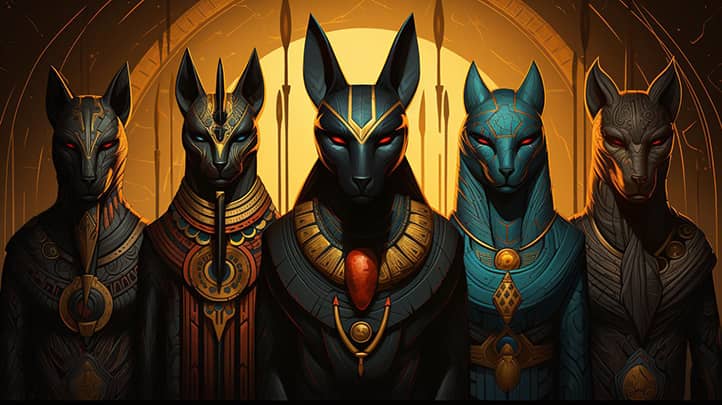
Origins of Therianthropes
The concept of therianthropy has deep historical roots, dating back to ancient mythologies and religious beliefs from various cultures worldwide. While modern understandings of therianthropy differ from ancient concepts, the historical context helps explain how this idea developed.
- Ancient Mythologies. Many mythologies feature gods and spirits capable of taking both human and animal forms. For example, in ancient Egyptian mythology, many gods were depicted with animal heads and human bodies.
- Shamanic practices. In the shamanic traditions of various cultures, there is a concept of spiritual transformation into an animal or acquiring an animal spirit-guide.
- Totemism. Many indigenous peoples practiced totemism, believing in a spiritual connection between a person and a particular animal species.
- Shape-shifting myths. Legends of werewolves and other creatures capable of transformation appear in the folklore of many cultures around the world.
Development of the Idea in Modern Culture
The modern concept of therianthropy began to take shape in the latter half of the 20th century, undergoing significant changes from historical views.
- 1970s. Early mentions of people identifying with animals emerged in the context of neo-pagan and New Age movements.
- 1990s. The rise of the internet fostered the formation of online communities where people could discuss their therianthropic experiences, marking the beginning of a modern understanding of this phenomenon.
- 2000s. The growth of social media and forums led to the broader dissemination of therianthropic ideas and the creation of more structured online communities.
- 2010s and beyond. Therianthropy began attracting the attention of researchers in psychology and sociology, and the first academic works dedicated to the phenomenon emerged.
- Influence of pop culture. Films, books, and TV shows depicting human transformation into animals or hybrid beings indirectly contributed to the popularization of therianthropy.
- Development of subcultures. Alongside therianthropy, related subcultures such as furries and quadrobers developed, leading to some conceptual blending in public perception.
- Modern understanding. Today, therianthropy is seen by many as a form of spiritual or psychological identity rather than a literal physical transformation.
The evolution of the concept of therianthropy reflects broader cultural and social changes in the understanding of identity, spirituality, and human-nature relationships. This phenomenon continues to evolve, drawing the attention of both researchers and the general public.
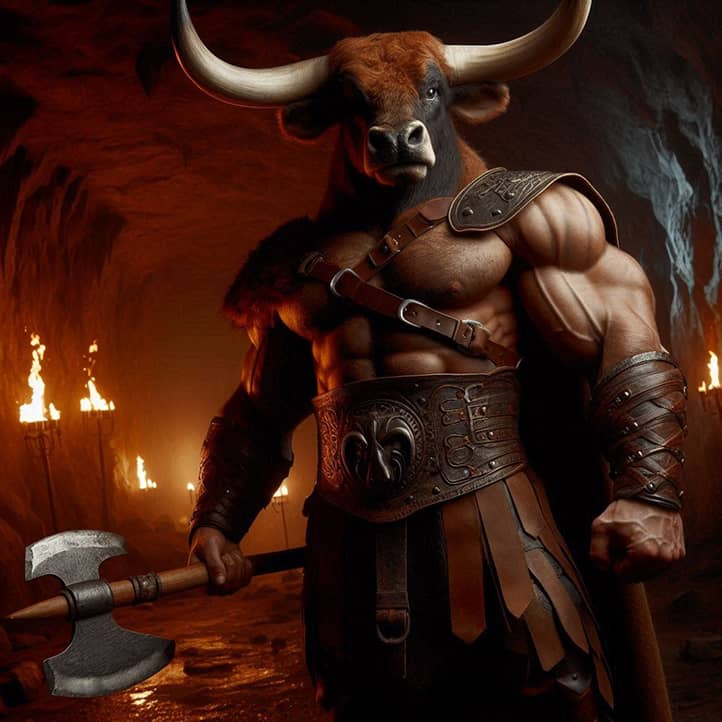
Therianthropes in Mythology and Folklore
Human imagination has always sought to transcend the boundaries between the human and animal worlds. This desire for unity with nature is reflected in countless myths, legends, and folktales from around the world. From ancient cave paintings to modern urban legends, the image of the human-animal hybrid continues to captivate and intrigue us.
Mythological beings that combine human and animal traits often served as intermediaries between worlds. They embodied natural forces beyond ordinary human understanding and acted as bridges between the mundane and the supernatural. These beings represented both fears and aspirations, reflecting the complex and contradictory relationship between humanity and the wild.
In various cultures, therianthropic beings played different roles: from formidable deities to wise mentors, from cunning tricksters to noble guardians. This diversity reflects the range of human experiences and perceptions of nature. Studying these mythological images allows us to understand not only ancient cultures but also our own relationship with the animal world.
Examples from Various Cultures
- Ancient Egyptian mythology. Gods were often depicted with human bodies and animal heads. For instance, Anubis with a jackal head, Horus with a falcon head, and Bastet with a cat head.
- Greek mythology. Centaurs (half-human, half-horse), Minotaur (a human with a bull’s head), satyrs (humans with goat legs and horns).
- Norse mythology. Berserkers—warriors believed to transform into bears or wolves in battle.
- Indian mythology. Ganesha with an elephant head, Hanuman—the monkey god.
- North American indigenous legends. Stories of shamans capable of transforming into animals and of animal spirits taking human form.
- African myths. Many African cultures have legends about leopard-people or lion-people.
- Slavic folklore. Werewolves (volkolaks), who could transform from human to wolf and back.
Symbolic Meanings of Human-Animal Hybrids
- Connection to nature. Hybrid beings often symbolized a deep connection between humans and the natural world.
- Divine power. In many cultures, animal traits in deities emphasized their superhuman abilities and closeness to natural elements.
- Dualism of human nature. Combining human and animal traits could symbolize the struggle between rational and instinctive aspects within people.
- Transformation and initiation. Stories of transformation into animals are often linked with themes of personal growth, initiation, and spiritual change.
- Taboos and social norms. Some myths about therianthropes illustrated social taboos or the consequences of violating societal norms.
- Shamanic practices. In shamanic traditions, the ability to “transform” into an animal symbolized spiritual power and connection with the spirit world.
- Ecological significance. Hybrid beings might represent the importance of harmony between humans and the environment.
These mythological and folklore representations laid the foundation for modern understanding of therianthropy, though today’s interpretation of the phenomenon significantly differs from ancient beliefs.

How Are Therianthropes Different from Furries and Quadrobers?
For a full understanding of the phenomenon of therianthropy, it’s essential to distinguish it from other related but distinct concepts, such as furries and quadrobers. Although these groups may share some common characteristics, there are significant differences among them.
Definitions of the Terms “Furries” and “Quadrobers”
- Furries:
- Furries are a subculture whose members are interested in anthropomorphic animal characters with human personalities and traits.
- Furries often create and/or wear animal costumes (fursuits), engage in role-playing, and create or consume art related to anthropomorphic animals.
- Quadrobers:
- Quadrobics is a type of activity, a kind of sport. The main goal of this hobby is to imitate the walk, run, and jump of a chosen animal as closely as possible.
- Quadrobers only mimic animal behavior without seeking a strong spiritual connection with it—they don’t eat from bowls or howl at the moon.
Key Differences Between These Groups
- Nature of Identification:
- Therianthropes: Identify as animals on a spiritual or psychological level.
- Furries: Primarily view their interest as a hobby or form of self-expression rather than an identity.
- Quadrobers: Typically wear masks and tails to create the ambiance of their interest.
- Spiritual/Psychological Aspect:
- Therianthropes: Often see their connection to an animal as a deep spiritual or psychological part of their personality.
- Furries: Generally do not attribute deep spiritual significance to their interest.
- Quadrobers: Lack strong spiritual beliefs associated with their non-human identity.
- External Expression:
- Therianthropes: Rarely use costumes or outward attributes to express their identity.
- Furries: Often create characters (fursonas) and may wear costumes (fursuits).
- Quadrobers: Their outward expression varies but is usually less prominent than that of furries.
- Social Aspects:
- Therianthropes: Often seek support in specialized online communities.
- Furries: Have a well-developed subculture with conventions, art, and social events.
- Quadrobers: Are usually less public and more focused on personal experiences and online interactions.
Common Traits and Possible Overlaps
- Interest in Animals/Non-Human Entities: All three groups show a heightened interest in non-human forms of life or beings.
- Online Communities: All three groups actively use the internet to communicate and share experiences.
- Creative Self-Expression: While this is most characteristic of furries, members of all three groups may use art, literature, or role-playing to express their identity or interests.
- Social Stigma: All three groups may face misunderstanding or stigma from society.
- Identity Overlap: Some individuals may identify with more than one of these groups. For instance, a therianthrope may also be part of the furry subculture, and many quadrobers consider themselves therians.
Understanding these differences and similarities is essential to form a complete picture of the modern landscape of alternative identities and subcultures related to non-human beings. This also helps avoid generalizations and stereotypes by recognizing the unique experiences of each group.

Why Are Therianthropes Criticized?
Like many other unconventional forms of self-identification, therianthropy faces various forms of criticism and skepticism. Understanding this criticism is important for an objective view of the phenomenon and its perception in society.
Main Arguments of Critics
- Lack of Scientific Basis:
- Critics argue that there is no scientific evidence for the existence of an “animal soul” or the possibility of psychological identification with an animal.
- Skeptics believe that therianthropy may be a form of self-suggestion or a result of psychological issues.
- Escapism:
- Some view therianthropy as a form of escape from reality, a way to avoid dealing with real-life issues.
- Critics believe this may hinder personal growth and social adaptation.
- Immaturity:
- Therianthropy is sometimes seen as a sign of immaturity or an inability to take on adult responsibilities.
- Some argue that it is a temporary phase that should be “outgrown.”
- Cultural Appropriation:
- Some critics accuse therianthropes of appropriating elements of indigenous cultures, especially when it comes to spiritual practices related to animals.
- Denial of Biological Reality:
- Critics argue that therianthropy may lead to denial of basic biological facts about human nature.
- Potential Psychological Risks:
- There are concerns that deep identification with an animal could lead to social isolation or mental health issues.
- Problems with Self-Perception:
- Some psychologists consider therianthropy a symptom of deeper issues with self-identity or self-esteem.
Social and Cultural Aspects of Criticism
- Public Misunderstanding:
- Therianthropy is often perceived by society as strange or deviant behavior, leading to stigmatization.
- Lack of information and stereotypes in the media may reinforce negative perceptions.
- Religious Criticism:
- Some religious groups view therianthropy as a form of paganism or even Satanism.
- This may lead to conflicts in families with strong religious beliefs.
- Professional Discrimination:
- There are concerns that openly identifying as a therianthrope could negatively impact career prospects or professional relationships.
- Medicalization:
- The tendency to view therianthropy as a mental disorder requiring treatment, rather than recognizing it as a form of self-identification.
- Cultural Conflict:
- In some cultures, the idea of identifying with animals may contradict established norms and values.
- Legal Issues:
- Debates on whether therianthropes should have special rights or protections similar to other groups with alternative identities.
- Impact on Children and Teenagers:
- Concerns about how the spread of therianthropy ideas may affect the development and self-perception of young people.
It is worth noting that many of these critical arguments are contested by therianthropes and researchers studying the phenomenon. They point to the lack of scientific studies confirming negative effects of therianthropy and emphasize the importance of respecting the diversity of forms of self-identification.
Understanding this criticism is important not only for an objective analysis of the phenomenon of therianthropy but also for developing constructive dialogue between therianthropes and society as a whole. It also highlights the need for further research into alternative forms of identity and their impact on psychological well-being and social adaptation.

Why People Become Therians: Psychologists’ Perspectives
The phenomenon of therianthropy has attracted the attention of psychologists and researchers who aim to understand why individuals identify with animals. Although there is limited scientific research on this topic, several theories and hypotheses attempt to explain this phenomenon.
Psychological Theories Explaining the Phenomenon
- Jung’s Archetype Theory:
- Some psychologists associate therianthropy with Carl Jung’s concept of archetypes, particularly the animal archetype.
- According to this theory, identifying with an animal may be a way to connect with deep aspects of the collective unconscious.
- Attachment Theory:
- Identifying with an animal may result from specific relationships with animals during childhood or a lack of secure attachment to people.
- Animals might be perceived as more reliable and safe objects for emotional connection.
- Coping Strategy Theory:
- Therianthropy can be seen as a mechanism for coping with stress or traumatic experiences.
- Identifying with a strong, free animal can give a sense of power and control.
- Individuation Theory:
- In Jungian psychology, therianthropy may be part of the individuation process—the development of a cohesive self.
- It could be a way to integrate the “animal” aspects of the psyche into the personality’s overall structure.
- Neuropsychological Theories:
- Some researchers suggest that therianthropy might be related to particular neural connections in the brain, which influence self-perception and the perception of the world.
Possible Reasons for Animal Identification
- Identity Exploration:
- Especially in adolescence and young adulthood, therianthropy may be a way to explore and form one’s identity.
- Ecological Awareness:
- A strong connection to nature and concern for environmental issues can lead to a profound identification with the animal world.
- Social Adaptation:
- For some, identifying with an animal can be a way to cope with social anxiety or a sense of alienation from society.
- Spiritual Quest:
- Therianthropy can be part of a spiritual journey, particularly in the context of neo-paganism or New Age philosophies.
- Empathy for Animals:
- Deep empathy and love for animals may evolve into a deeper form of identification.
- Childhood Experiences:
- Strong impressions from interactions with animals in childhood or the influence of literature and films about animals can contribute to developing a therianthropic identity.
- Neurodiversity:
- Some researchers associate therianthropy with autism or other forms of neurodiversity, suggesting it may represent an alternative way of perceiving the world and oneself.
- Cultural Influence:
- Growing awareness of therianthropy through the internet and media may encourage individuals exploring their identity to adopt this form of identification.
It is important to note that these theories and reasons are not mutually exclusive, and each therian may have a unique combination of factors leading to this form of self-identification. Moreover, many therians describe their experience as an innate and unchanging aspect of their personality, rather than a result of external influences or a conscious choice.
Further research in this area is needed to better understand the psychological mechanisms and social factors underlying therianthropy. This will help not only in understanding the phenomenon itself but also in developing more effective approaches to support individuals with alternative forms of identity.
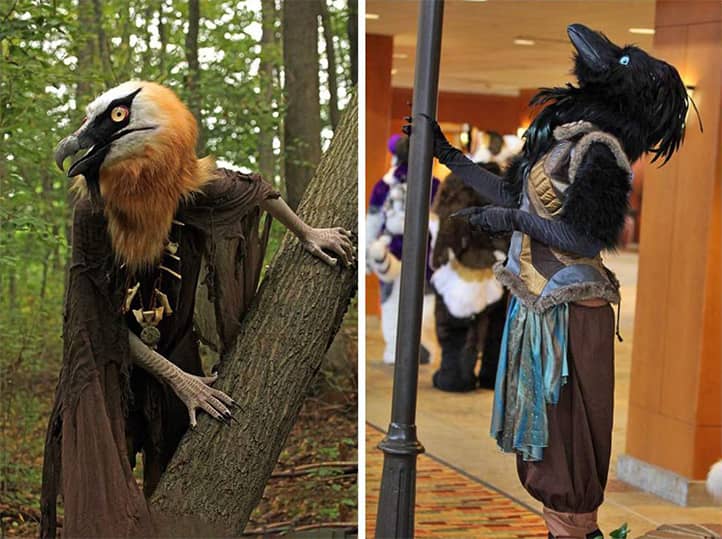
Can Therianthropy Affect Mental Health?
The potential impact of therianthropy on mental health is a subject of discussion among psychologists and in society as a whole. It is important to consider both potential risks and possible positive aspects of this phenomenon.
Potential Risks and Challenges
- Social Isolation:
- If therianthropy leads to estrangement from society or family, it may negatively affect mental health.
- Fear of misunderstanding or rejection can lead to avoidance of social interactions.
- Identity Conflict:
- Difficulties in reconciling the human and “animal” parts of identity can cause inner conflict and stress.
- Adapting to everyday life may be challenging if identification with an animal becomes too intense.
- Body Dysmorphia:
- In extreme cases, dissatisfaction with one’s human body may develop, potentially leading to body dysmorphic disorder.
- Denial of Reality:
- If therianthropy transitions into a belief in physical transformation, it may indicate a loss of connection with reality.
- Self-Esteem Issues:
- Negative reactions from others may lead to lower self-esteem and self-confidence.
- Professional Challenges:
- Openly expressing therian identity may create issues at work or school.
- Emotional Instability:
- Constantly “switching” between human and animal identities can be emotionally draining.
Specialists’ Perspectives on Therianthropy and Mental Health
- Diverse Opinions:
- There is no consensus among psychologists and psychiatrists regarding the effects of therianthropy on mental health. Some view it as a harmless form of self-expression, while others see potential risks.
- Continuum of Normality:
- Many specialists believe that therianthropy itself is not a mental disorder if it does not cause significant distress or interfere with daily life.
- Importance of Context:
- Assessing the impact of therianthropy on mental health should consider individual context, including cultural factors and personal history.
- Potential Positive Aspects:
- Some researchers note that therianthropy may have positive effects, such as increased self-acceptance and emotional stability.
- Need for Further Research:
- Most specialists agree that additional scientific studies are needed to fully understand the impact of therianthropy on mental health.
- Individualized Approach:
- Many psychologists emphasize the importance of a personalized approach to each case, avoiding generalizations.
- Role of Social Support:
- Specialists note that a supportive environment can significantly reduce potential negative effects.
- Comparison with Other Identities:
- Some researchers draw parallels between therianthropy and other forms of alternative identity, emphasizing the need for an unbiased approach.
To minimize potential risks and maximize the well-being of individuals who identify as therians, specialists recommend:
- Supporting open dialogue about therianthropy in society and professional circles.
- Ensuring access to psychological support for those experiencing difficulties related to their identity.
- Conducting further research to better understand the phenomenon and its impact on mental health.
- Promoting a culture of acceptance and respect for diverse forms of self-identification.
The impact of therianthropy on mental health largely depends on individual circumstances, social context, and personal resources. With a responsible approach and available support, therianthropy can be integrated into a person’s life without negative consequences for mental health.

Therians in Modern Society
In the digital age and an era of global communication, the phenomenon of therianthropy has taken on new dimensions. The internet has become fertile ground for the formation and growth of therian communities, enabling people with similar perspectives to connect across geographic boundaries. These virtual spaces have become not only places for interaction but also laboratories for exploring and expressing identity.
Modern society, with its emphasis on individuality and self-expression, provides a unique context for the development of therianthropy. In a world where traditional forms of identity are increasingly questioned, therianthropy offers an alternative path to self-discovery and a connection to the natural world. This phenomenon can be viewed as part of a broader movement towards rethinking the relationship between humans and their environment.
At the same time, therianthropy faces challenges in terms of social adaptation and acceptance. Stigmatization and misunderstanding from society remain significant issues for many therians, raising important questions about the boundaries of tolerance and acceptance in the modern world, as well as how society can adapt to new forms of self-identification.
Studying therianthropy in a contemporary context opens up new perspectives for research in psychology, sociology, and anthropology. It allows us to gain deeper insight into the mechanisms of identity formation, the role of imagination and fantasy in the human psyche, and the evolution of cultural archetypes in the digital era. Therianthropy acts as a mirror, reflecting both ancient and emerging aspects of human experience.
While therianthropy remains relatively unknown to the general public, it is gaining importance in modern discussions about identity, self-expression, and social acceptance. Let us explore how therians interact with society and the role modern technology plays in this interaction.
Therian Communities and Subcultures
- Online Communities:
- Internet forums, social networks, and specialized websites have become primary platforms for therian interaction.
- These spaces enable experience sharing, problem discussion, and mutual support.
- Offline Gatherings:
- Some therians organize in-person gatherings and events, though these are less common than online activities.
- Such meetings may include discussions, meditation, or shared spiritual practices.
- Interaction with Other Subcultures:
- There is some overlap with the furry community, though most therians emphasize distinctions between these groups.
- Connections with neo-pagan and nature-oriented spiritual movements.
- Artistic Self-Expression:
- Many therians express their identity through art, literature, and music.
- They create and share themed content on social media and specialized platforms.
Influence of the Internet and Social Media on Idea Dissemination
- Information Accessibility:
- The internet has made information about therianthropy more accessible, leading to increased awareness and self-identification.
- Online resources provide a safe space for individuals to explore their identity.
- Community Formation:
- Social networks have simplified the process of finding like-minded individuals and creating virtual communities.
- This is especially important for people from regions where therianthropy is less widespread.
- Visibility and Representation:
- Social media gives therians a platform to express their views and experiences.
- This contributes to greater visibility and understanding of the phenomenon in society.
- Educational Role:
- Many therians use online platforms to educate the public about their identity.
- They create and distribute educational materials to dispel myths and stereotypes.
- Discussion Platforms:
- Online forums and social media provide spaces for open discussions on therianthropy, including critical viewpoints.
- This encourages dialogue and mutual understanding.
- Impact on Youth:
- Easy access to information about therianthropy can influence self-identification among young people.
- This leads to both positive reactions (support and acceptance) and concerns (potential influence on personality development).
- Globalization of the Phenomenon:
- The internet has spread ideas of therianthropy beyond Western countries.
- This has led to the formation of international communities and the exchange of experiences across cultures.
- Commercialization:
- Online stores have emerged offering therian-themed items (jewelry, clothing, accessories).
- A market for services (online consultations, self-discovery courses) targeting therians is also developing.
- Challenges and Risks:
- Spread of misinformation and pseudoscientific theories about therianthropy.
- Risks of cyberbullying and online harassment for openly identified therians.
Social Adaptation and Challenges
- Identity Disclosure:
- Many therians face a dilemma about whether to openly reveal their identity.
- Strategies are being developed for safe and comfortable disclosure of therian identity.
- Interaction with Family and Close Ones:
- Challenges in explaining their identity to family and friends.
- Finding a balance between self-expression and maintaining harmonious relationships.
- Professional Sphere:
- Questions about whether and how to reveal their identity in the workplace.
- Potential issues of discrimination and misunderstanding from colleagues or employers.
- Educational Environment:
- Challenges faced by young therians in schools and universities.
- The need for educational programs that include information on non-traditional forms of identity.
- Legal Aspects:
- Lack of clear legal status for therians in most countries.
- Discussions on the need for protections of therian rights within anti-discrimination laws.
- Medical Issues:
- Communication challenges with medical professionals, especially in mental health.
- The need for greater awareness within the medical community about therianthropy.
- Social Stereotypes:
- Combating negative stereotypes and societal prejudices.
- Efforts to increase public understanding and acceptance of therianthropy.
- Integration into the LGBTQ+ Movement:
- Discussions on including therians within the broader movement for rights and recognition of alternative identities.
- Challenges in finding common ground with other groups fighting for recognition.
- Spiritual and Religious Aspects:
- Searching for ways to integrate therian identity into existing spiritual practices.
- Creation of new spiritual approaches that account for the unique aspects of therian experiences.
- Psychological Support:
- Growing need for specialized psychological assistance for therians.
- Development of therapeutic methods that consider the unique aspects of therian identity.
Therians in Modern Society
Therians in contemporary society face numerous challenges but also find new opportunities for self-expression and communication. The internet and social media play a crucial role in the formation and development of therian communities, providing a platform for experience sharing, mutual support, and education. At the same time, social adaptation remains a complex process requiring ongoing dialogue between therians and society as a whole.
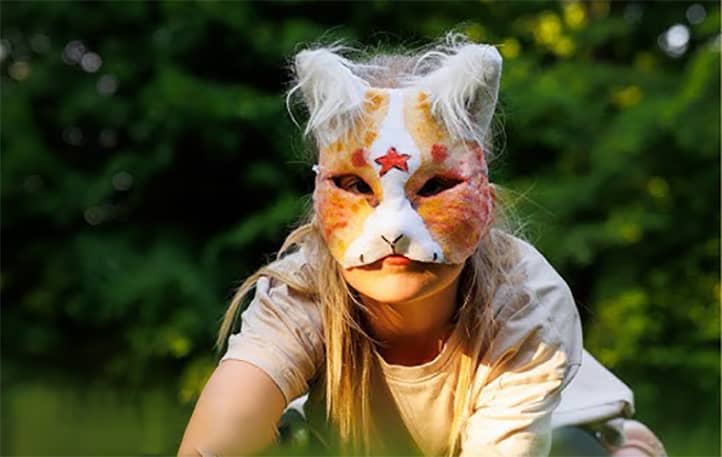
Conclusion
Therianthropy represents a unique phenomenon at the intersection of mythology, psychology, and modern culture. It reflects a profound human need for a connection with nature and a search for one’s place in the world. From ancient myths to modern online communities, the idea of merging human and animal nature continues to captivate and inspire people.
The study of therianthropy opens up a vast field for exploring the human psyche and social interactions. It raises important questions about the nature of identity, the boundaries of human experience, and our relationship with the natural world. At the same time, this phenomenon presents new challenges for society, relating to the acceptance and understanding of non-traditional forms of self-expression.
Modern technology and social media have played a key role in the development of therian communities, providing a platform for communication and self-expression. However, they have also brought about new issues, such as online harassment and the spread of misinformation. Striking a balance between opportunities for self-realization and potential risks remains an important topic for discussion.
In the context of increasing interest in ecological issues and environmental protection, therianthropy can be seen as an expression of the human drive toward more harmonious relations with nature. It reminds us of our deep connection with the animal kingdom and can contribute to the development of a more eco-friendly worldview. Further study of this phenomenon has the potential not only to expand our understanding of the human psyche but also to prompt a reevaluation of our place within the planet’s ecosystem.
